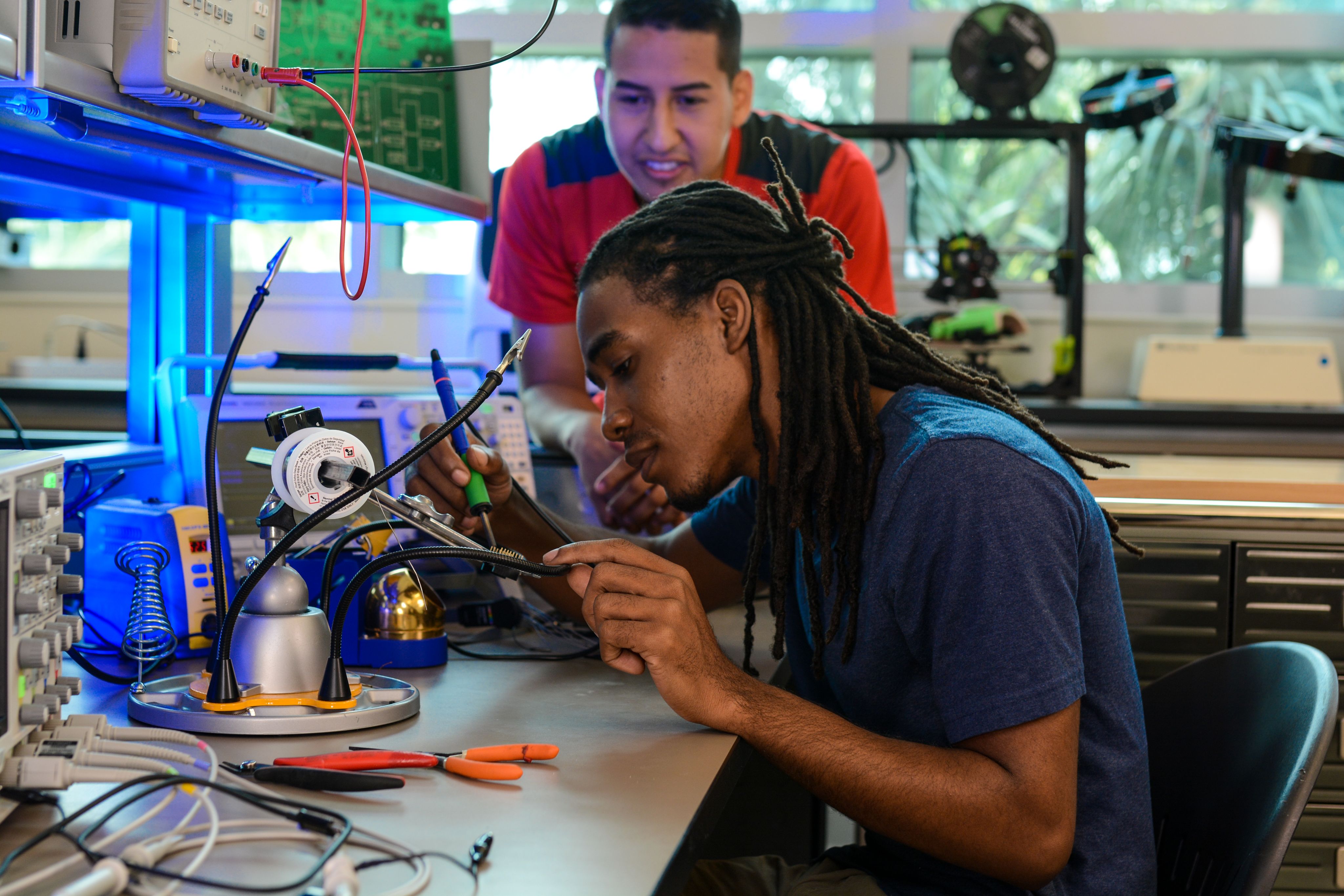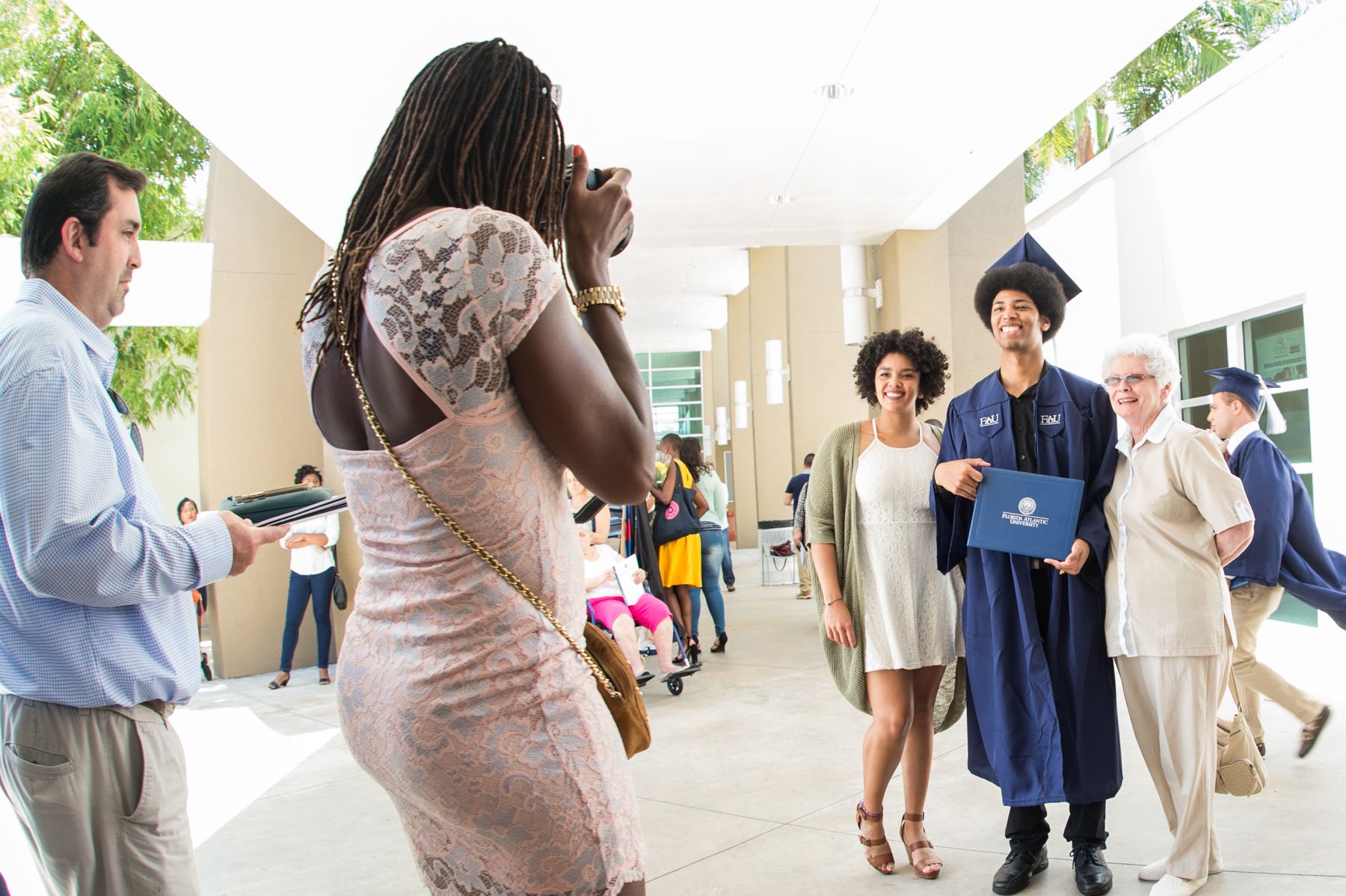Student Success for All: Disruption, Analytics and the Fight for Equity

How Florida Atlantic University Used Big Data to Double Graduation Rates while Eliminating Equity Gaps
At a time when many universities are struggling to close completion gaps between underrepresented students and their overall student bodies, Florida Atlantic University achieved the nation’s fastest jump in graduation rates while eliminating these gaps. In fact, students who identify as Black/African American or Hispanic/Latinx, and those who are Pell-eligible, outpace the overall university rates.
“Many institutions merely talk about student success, but Florida Atlantic’s track record of eliminating equity gaps shows a true commitment to delivering success for all students.”
Founded on the principle that higher education should be available to everyone, Florida Atlantic — one of the nation’s most diverse public institutions — specializes in lifting up traditionally underserved students. Its demographics mirror the diverse state it serves: 29% of undergraduates identify as Hispanic or Latino and 20% identify as Black or African American. At the same time, 41% of undergraduates and their families have incomes below the threshold necessary to receive a Pell grant.
For many years, Florida Atlantic suffered from the promulgation of false narratives regarding whether or not its students could succeed at all. It viewed itself as the local school where any student could enter and have a fair shot at earning a bachelor’s degree. However, upon deep self-reflection, it was discovered that the university was failing to deliver on its promise of an excellent educational experience. Students entered unprepared for university-level studies and navigated several barriers without support or clear expectations for timely graduation. Often, they would persist for a semester or two before they experienced academic failure or dropped out due to lack of a path to complete their degrees — while still accumulating debt. Accordingly, the barrier to success for students was not limited to a single issue. Instead, the problem was complex and embedded in every aspect of university operations, resulting from institutional silos that lacked clear strategic objectives. From recruitment to academic programs, there were limited expectations for personnel to focus on student success.
The advent of the Florida State University System’s performance-based funding model in 2014 – the results of which are tied to financial rewards or penalties – gave the university specific outcomes to focus on: freshman-to-sophomore retention with a 2.0 GPA, and the 4- and 6-year graduation rates. In 2014, FAU failed to retain more than a third of all full-time, first-time-in-college students with at least a 2.0 GPA in the second year. Sadly, only 19% of these students completed their degrees in four years. As a result of these low scores, FAU ranked in the bottom three of all Florida universities. The state withheld $6.95M from the institution’s 2014-15 budget and required successful implementation of an improvement plan to restore those operating funds.
Rather than continue to accept the false narratives, newly appointed President John Kelly made it clear through the strategic planning process that the university would enhance its ranking in the state’s performance model. One overarching goal emerged: break down organizational barriers so that incoming first-year students could progress toward timely completion of their degree programs.


To break through these barriers, FAU launched team-based analytics, which is rooted in the philosophy of engaging a mix of stakeholders such as executive decision makers and analysts who can make rapid recommendations. The approach relies on a cross-functional team made of various divisions and units that do not traditionally interact on academic matters and are not likely to be regularly engaged in student success conversations. Organizationally, silos are traversed by the group coming together to triage intractable conflicts. Areas can challenge one another in a constructive and critical sense. With executive-level buy-in and representatives from across the organization engaged in open, data-fueled dialogues, legacy barriers to student progression can be resolved quickly.
In addition, team-based analytics overcame the issue of units developing their own record-keeping and data systems. Standardization broke through these silos, resulting in a data warehousing approach that pulls information across systems into a sole repository. With a unified focus on performance, groups agreed to steer support to full-time, degree-seeking, first-time-in-college students who enrolled in a summer or fall term — though all students benefited from this initiative. Assessments were made via annual progress reports to compile interventions and list outcomes and impacts on performance funding metrics.
“Team-based analytics has ensured that the actionable data is in the hands of those who can make a difference, breaking through traditional organizational barriers in order to focus on equitable success.”
To institutionalize these changes, FAU created a performance analytics group known as the Strategic Workgroup for Ascending to the Top (SWAT). Comprised of C-level executive decision makers, financial aid officers, analysts, programmers and statisticians, the SWAT team steers all student success interventions at the university. Meeting weekly, the group rejected the standard approach of static reporting and sluggish tiered review processes, instead opting for regular problem-defining sessions, live data visualizations, and immediate policy or programmatic decision making. The inclusion of different levels of employees helps overcome vertical silos in the organization, allowing decision makers to engage directly with transactional-level employees. At the same time, the inclusion of different functional areas means that horizontal silos are broken, through cross-unit communication.
Institutionalizing change also occurred on the data side of the initiative. Multiple tools were implemented to ensure targeted access to the information, such as predictive analytics modules, which include scoring for the likelihood of students to persist into the next term, assessment tools to measure the impact of various interventions on the predicted success of participants versus non-participants, and academic advising dashboards with quick data insights to inform conversations with students. The university integrated these predictive measures into its advising system, as well as supplemental predictive scores regarding the likelihood of students to graduate within four years, and the likelihood that a student would succeed in a current term.
Perhaps most importantly, the university used its new standards for data governance to launch a robust array of live data visualizations, such as regularly updated dashboards with frequently used filters, the vast majority of which are accessible to any internal audience. The key to the success of team-based analytics is pairing these tools with the correct teams that can leverage them to make organizational changes at rapid speeds, often launching interventions in as little as a week’s time.

Since 2014, interventions have followed the team-based analytics framework. Interventions typically occur in the form of 1) policy changes that promote progression and degree completion, 2) curricular revisions in order to attend to a bottleneck of enrollments at the upper-division level, or 3) financial assistance interventions to steer resources to students who would most benefit from the dollars.
Before team-based analytics, Florida Atlantic projected that any future increases in rates of retention and timely graduation of students would have been modest and lagging. Through the launch of analytics-driven interventions, the university jumped from a 65.9% retention rate of 2.0+ GPA students to 81% — the second biggest improvement in the state system over six years. Its four-year graduation rate jumped from 19% to 47.5% — the biggest improvement in the state and the highest increase over any six years of time by any public institution in recent history.
By supplying teams with actionable data sources, Florida Atlantic is literally changing lives by increasing the number of bachelor's degrees awarded by more than 950 annually – an achievement that earned recognition from the Association of Public and Land-grant Universities.



Not only did FAU more than double its graduation rate with the team-based analytics initiative — it did so without gaps in four-year outcomes for students on the basis of race, ethnicity, or Pell eligibility/income. Team-based analytics enabled the modeling of the disparate impacts of interventions, which allowed Florida Atlantic to focus on becoming more diversified. The university is now designated as a Hispanic Serving Institution, and regularly ranks in the Top 50 nationally for campus ethnic diversity by U.S. News and World Report.
Team-based analytics is a permanent fixture at Florida Atlantic University, serving as the backbone for its sustained allocations in the State University System performance-based funding model. While the university’s turnaround story started with $6.95M being withheld in fiscal year 2014-15, Florida Atlantic netted $20.4M in state allocations during fiscal year 2021-22. To sustain the initiative, the institution reinvests these funds in the interventions that the SWAT Team has led, including everything from the seamless advising system to predictive analytics.
“When I became president, the graduation rate was one of the most daunting challenges I faced. We are one of the nation’s most diverse universities, so we are especially proud to have eliminated the equity gaps among historically underserved students while improving overall graduation rates.”
Download Florida Atlantic University’s guide to learn how it more than doubled graduation rates, closed equity gaps and advanced student success at www.fau.edu/success.

This content was paid for and created by Florida Atlantic University. The editorial staff of The Chronicle had no role in its preparation. Find out more about paid content.


